
Almost four months after AMD first announced the details of its budget-orientated B850/840 chipset, the first motherboards to sport them have finally arrived. The first one to pass through our magnifying glass of inspection is the Asus ROG Strix B850-F Gaming WiFi—an ATX-sized model that probably best represents the higher end of the B850 range.
In case you're not familiar with the new chipset, it's worth noting that the primary difference between AMD's Xx70 and Bx50 is the number of connectivity options, such as USB and M.2 ports, but it's a little more nuanced than that. For example, X870 motherboards all come with at least one USB4 port but such a feature is entirely optional for B850 boards.
What you're getting here though is pretty much all the bells and whistles you'd expect from a last-gen X670 motherboard. The ROG Strix B850-F Gaming WiFi sports four M.2 slots for SSDs (the primary one is Gen5, while the other three are all full-speed Gen4), which makes a change from seeing multiple M.2 slots running at all kinds of different speeds.
The good news continues with the USB options. You're not getting USB4 but at least you have one 20 Gbps Type-C, one 10 Gbps Type-C, two 10 Gbps Type-A, four 5 Gbps Type-A, and four USB 2.0 ports on the rear IO panel. Those twelve USB ports are joined by another four headers on the board (1x 10 Gbps, 1x 5 Gbps, 2x USB 2.0) for a total of 16 USB ports.
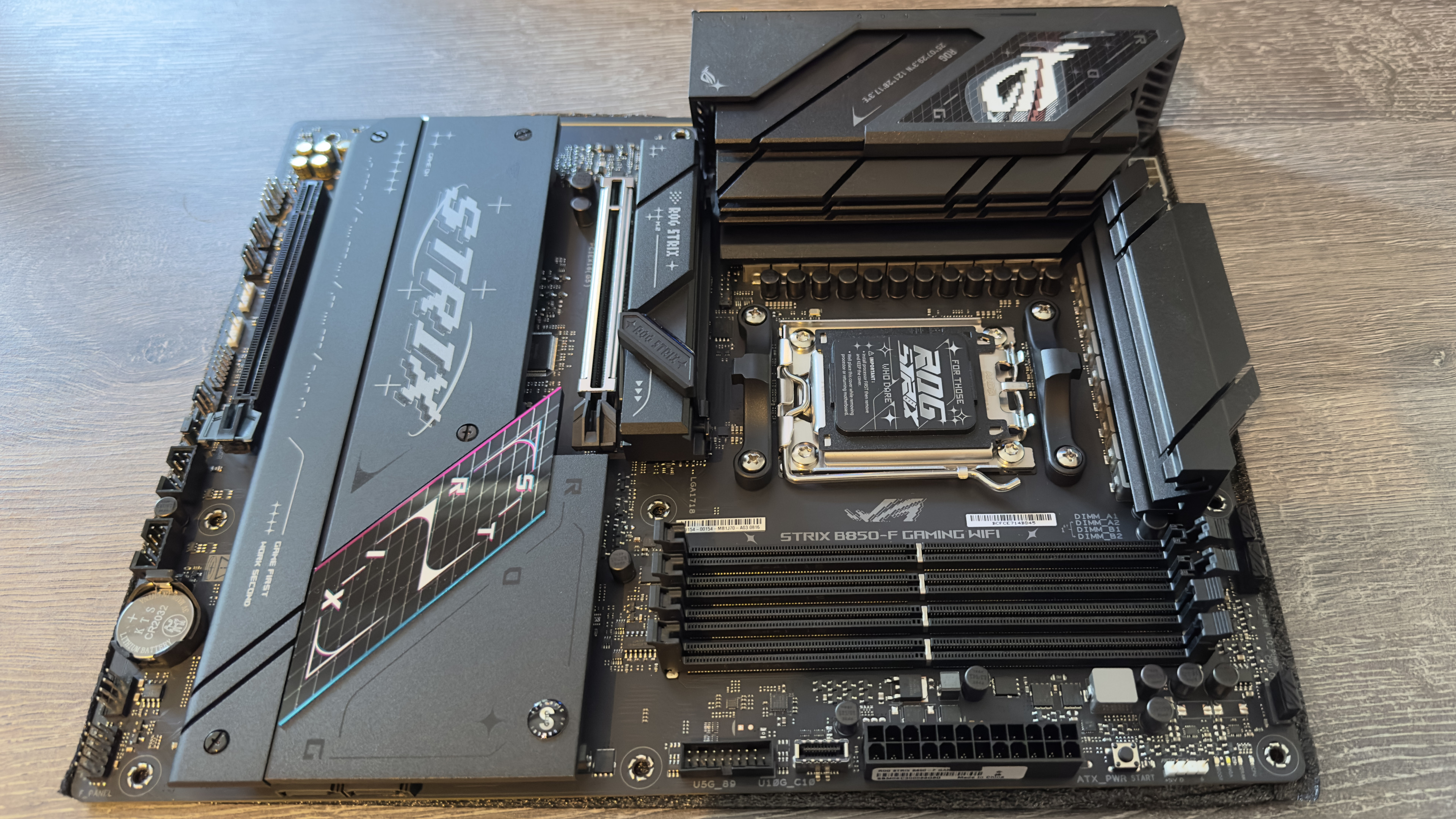
Socket: AMD AM5
Chipset: AMD B850
CPU compatibility: AMD Ryzen 7000/8000/9000 desktop
Form factor: ATX
Memory support: DDR5-4800 to DDR5-8000+(OC), up to 256 GB
Storage: 4x M.2, 2x SATA
USB (rear): 1x USB 3.2 Type-C 20 Gbps, 1x USB 3.1 Type-C 10 Gbps, 2x USB 3.1 Type-A 10 Gbps, 4x USB 3.0 Type-A 5 Gbps, 4x USB 2.0 Type-A
Display: 1x HDMI 2.1, 1x DisplayPort 1.4
Networking: Intel 2.5G LAN, Wi-Fi 7
Audio: ROG SupremeFX 7.1 ALC4080
Price: $300 / £348 / AU$541
However, the payback for all these storage and connectivity options is a dearth of SATA ports and PCIe slots. You get two apiece and that's it. That's probably going to be fine for most PC gamers building a new AM5 rig, and at least both PCIe slots are electrically x16 (one being Gen5 and the other Gen4), but just two SATA ports seems a tad measly.
If you do need more SATA options, then this isn't the motherboard for you but I strongly suspect that most B850 models will be similarly equipped.
The ROG Strix B850-F Gaming WiFi motherboard supports all AM5 Ryzen processors and thanks to its 20 power stages (80 A each, with 16 for the CPU), it should have no problem dealing with a 170 W Ryzen 9 9950X or the like.
In terms of RAM, you can load it with up to 192 GB of DDR5, though the more you pile in, the less likely it will run at higher speeds. As with all AM5 processors, DDR5-6000 is the best balance between stability and performance, so you're going to be better off just using two DIMMs and no more.
Asus, MSI, and others have taken the opportunity, with the launch of new CPUs and motherboard chipsets, to do something about the overall ease of use of their products. In this instance, there's not much on offer, though—just Asus' Q-Release mechanisms for the primary PCIe and M.2 slots.
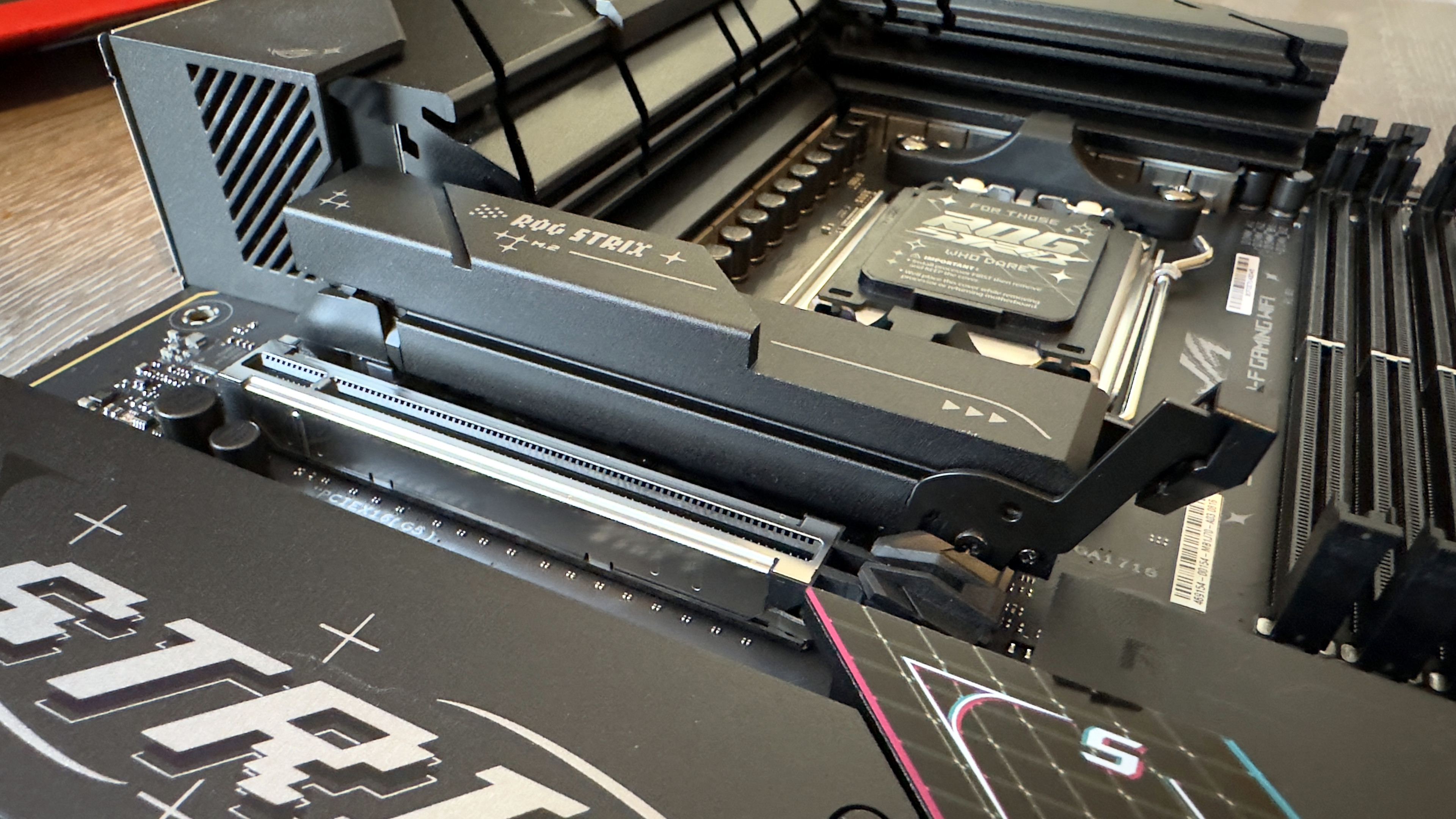
The former works by holding a graphics card firmly in place until you pull it out at an angle, which pushes the mechanism back. I'd much prefer to see the implementation used on other Asus models, where you pull a spring-loaded lever on the side of the board to release the graphics card. At least the one on the M.2 slot is very simple to use and it's genuinely worthy of the Q-Release name.
✅ You want the fastest B850 motherboard out there: The ROG Strix B850-F outperforms X870 boards at the same price so if frame rate is absolutely everything, then this is the one to go for.
❌ You want good cooling and lots of features: The VRM and SSD thermal solutions aren't particularly good and X870 boards sport more ports and sockets.
But that's where QoL (quality of life) features start and end on the ROG Strix B850-F Gaming WiFi. For example, there are no chassis fan headers in the middle of the board—all three are located at the very bottom. There is no display for BIOS codes, just four tiny LEDs that indicate the status of the CPU, RAM, GPU, and boot status.
There's a tiny, almost hidden power button (but no restart) on the board but it is tucked away right at the top, making it very inaccessible once installed in a case, with cooling and wires all fitted. While such features aren't hugely useful to everyone, I expect to see better ones on a motherboard with a $300 price tag.
You do get a BIOS reset and flashback switch on the rear IO panel but they're both very small and fiddly to use. It would add mere cents to change them into more substantial buttons.
Then again, this is a motherboard that's designed to be installed once and only gradually worked on with component upgrades over time, and I should imagine most PC enthusiasts will just be more interested in the substantial heatsinks covering the VRMs and primary M.2 slot, or the fact that it sports a built-in Wi-Fi 7 module.
Benchmarks and performance
CPU: AMD Ryzen 9 9900X
Cooler: Asus ROG Ryujin III 360 Extreme
RAM: 32 GB Lexar Thor OC DDR5-6000
Storage: 2 TB Corsair MP700
PSU: Corsair RM850x Shift 850 W
OS: Windows 11 24H2
Chassis: Open platform
Monitor: Acer XB280HK
As we've only recently updated our motherboard benchmark suite, we don't have a wealth of other models to compare the ROG Strix B850-F Gaming WiFi to. Since the first Zen 5 processors came to market, AMD has been gradually improving the performance of its Ryzen 9000-series chips with Windows and BIOS updates.
This means that some of the performance results aren't fully comparable as the underlying performance environments aren't 100% identical. However, at the very least, one can look at the figures and judge how well the ROG Strix B850-F Gaming WiFi performs compared to an Asus ROG Crosshair X670E Hero and MSI MAG X870 Tomahawk on the basis of how they were in October 2024.
At the very least, the Gigabyte X870E Aorus Pro included in the figures is as up-to-date as possible and both it and the MSI board are similar in price to the ROG Strix B850-F Gaming.

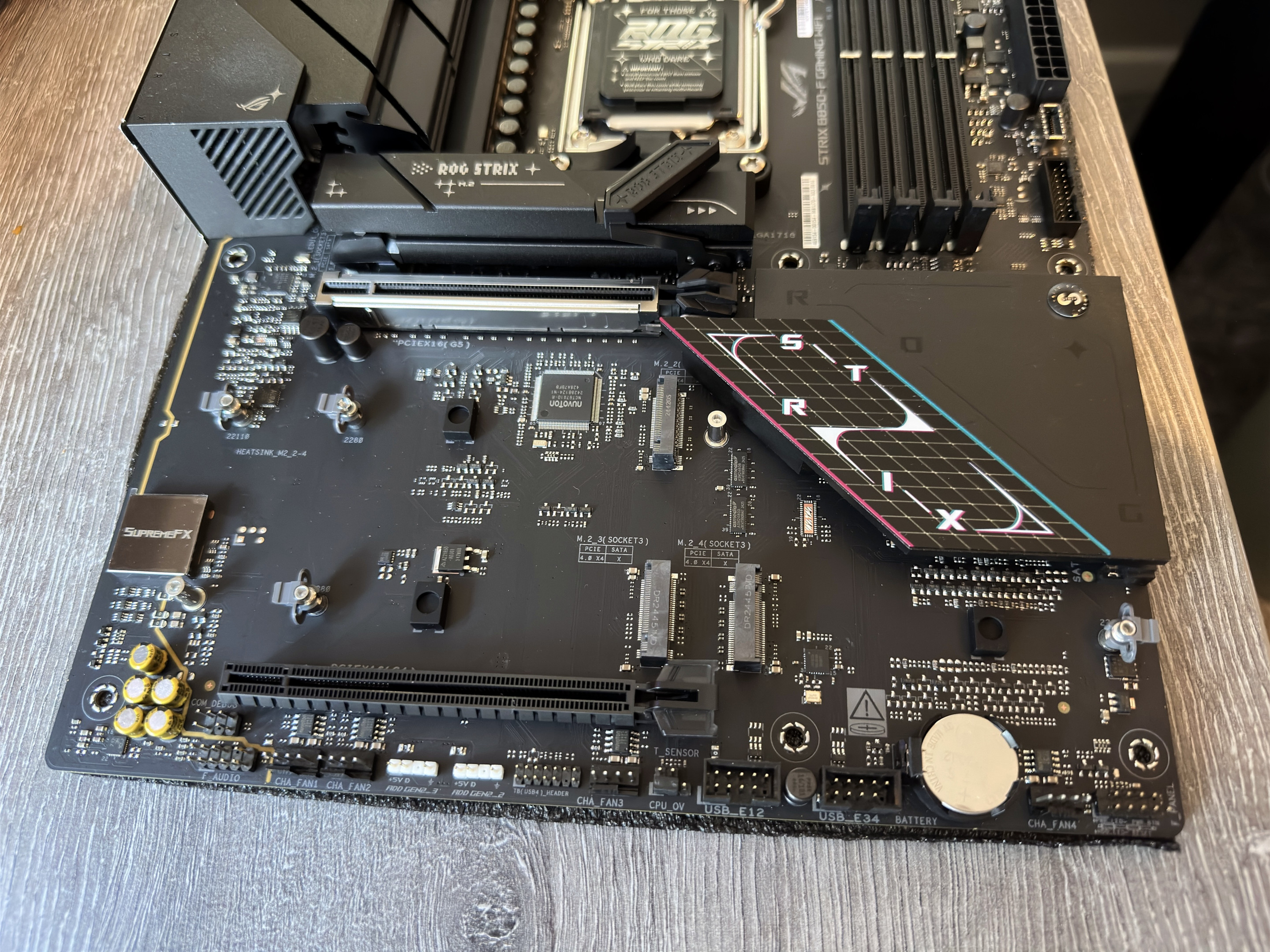

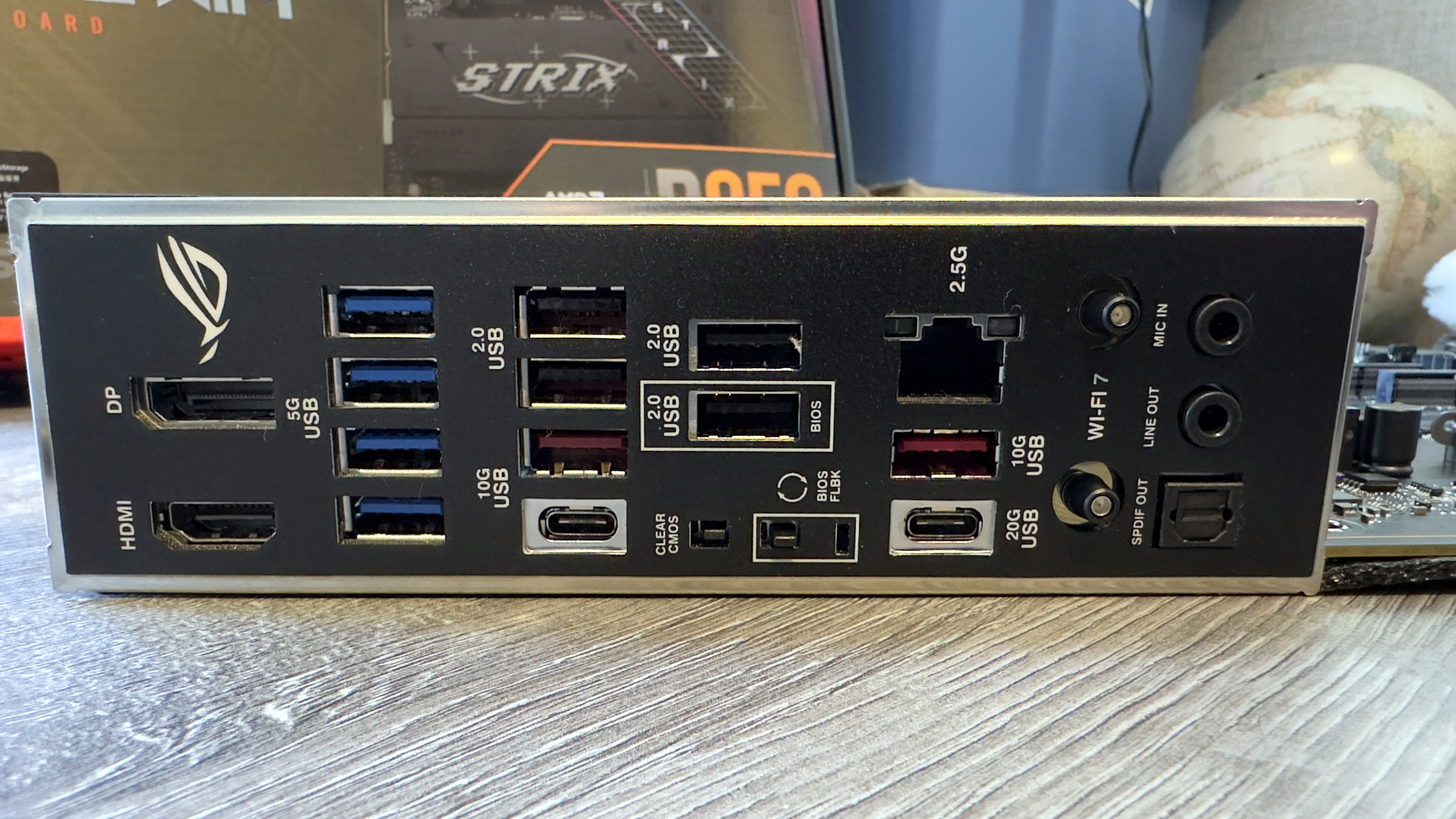
That said, I have retested the ROG Crosshair with its latest BIOS version and Windows 11 24H2, and while there is no difference in the average frame rates since the last time I benchmarked the motherboard, the 1% low figures are lower by around 5 to 7%. On the plus side, in Windows 11 24H2, the Factorio benchmark is now 13% quicker, as is the compression result for the 7zip test.
While it's best not to read too much into these figures, mostly because of the impact of Windows 24H2, the Asus B850-F is clearly just as good as the others and in the case of Cyberpunk 2077, better than the $640 Crosshair X670E Hero. It's worth noting, though, that the results for that board and the MSI Tomahawk were collected with an 'all-high' power profile enabled.
AMD recommends that you use Balanced in Control Panel and then Balanced or Best Performance in Windows Settings, but I have consistently found that the Ryzen 9 9900X and 9950X perform better in games if one uses the High Performance setting in Control Panel.
If all you want is a motherboard for PC gaming and nothing else, the little Asus seems to be the one to go for. That said, we're only talking about a few frames per second here and there, and at $300, you'd certainly want a bit more than just gaming chops.
When it comes to CPU-heavy tasks, such as offline rendering and file compression/decompression, the ROG Strix B850-F is as good as the two X870 boards and it easily outpaces the X670E model in the 7zip test.
That's to be expected, of course, because while the B850 chipset doesn't really offer any real benefits over the previous generation, in terms of performance tweaks, the newer motherboards do support higher RAM speeds. That suggests the manufacturers have improved the underlying memory structures, increasing stability and reducing latencies.
However, while relative performance is on par with the Gigabyte and MSI boards, the Asus B850-F falls behind in another aspect.
Even though the ROG Strix B850-F Gaming WiFi has hefty metal heatsinks covering the power stages and the primary M.2 slot, they're clearly not as good as those on the Gigabyte and MSI models. I suspect it's down to the thermal pads used between the sinks and components because removing the M.2 heatsink after all the tests were done showed that the thermal pad barely made contact with some of the Corsair MP700 chips.
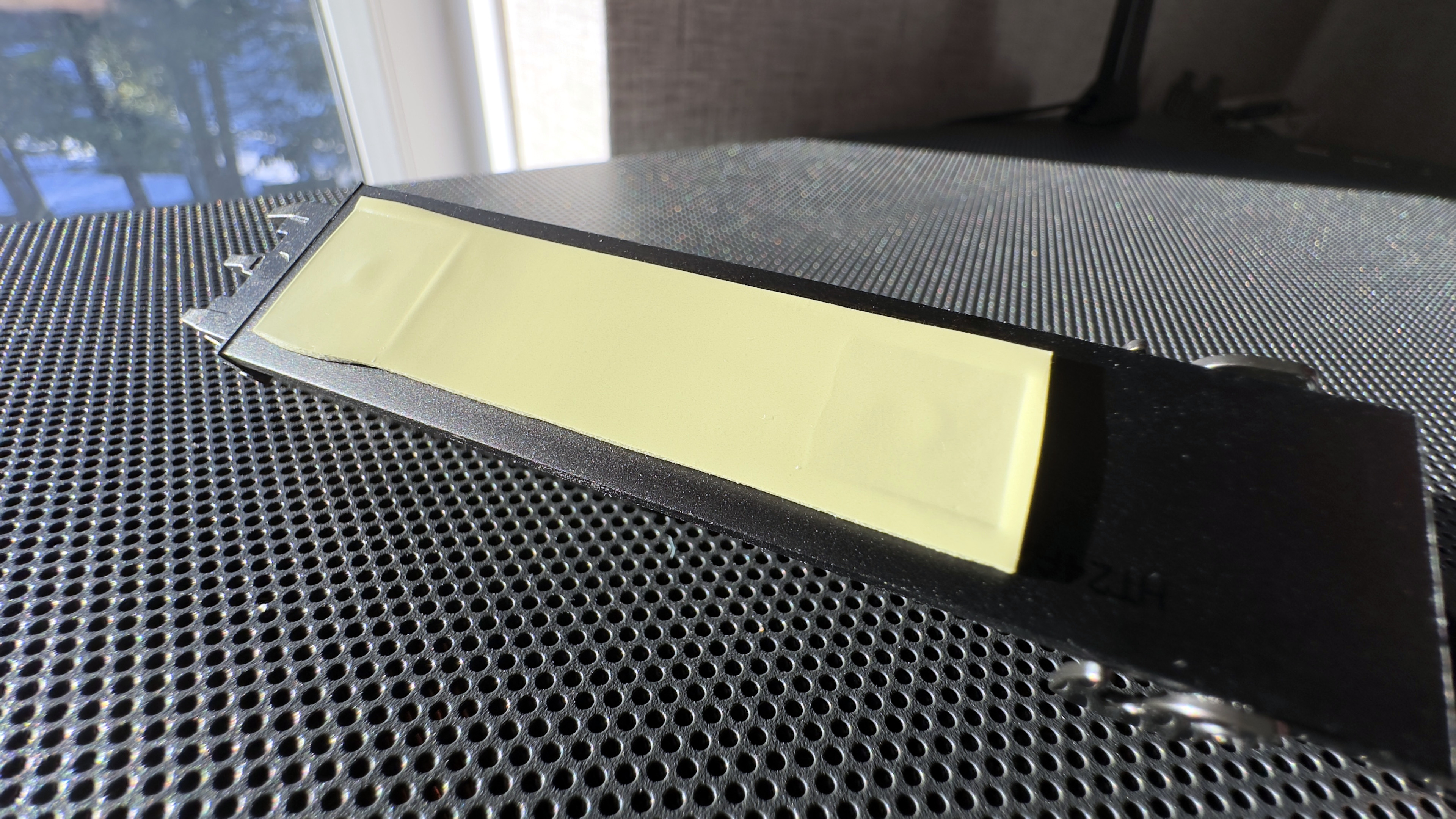
That would be acceptable on a $120 budget motherboard but on something that's $300? Not in the least bit and it makes a bit of mockery of the fact that the ROG Strix B850-F sports two PCIe 5.0 M.2 slots. If the main SSD cooling system isn't up to dealing with a Gen5 drive, then the other one certainly isn't.
It also brings the board's gaming performance into question because many PC gamers will want to overclock their CPU, use ultra-fast RAM, or install a Gen5 SSD. If the board isn't truly capable of managing the thermal load, is it worth buying it just for the sake of a few more frames per second?
Conclusion
On the basis of those last thermal performance figures, you can probably guess where the conclusion to this review is heading. But just to make the point extra clear, here's how the Asus ROG Strix B850-F Gaming WiFi compares to the Gigabyte X870E Aorus Pro and MSI MAG X870 Tomahawk WiFi in terms of price and features.
Other than the weak thermal solutions, the Asus B850-F is a really good motherboard. However, its feature set doesn't justify the price, especially when one can get more USB and SATA ports, and more PCIe slots, for the same kind of money.
If Asus had set the price to, say, $240 then it would be a far more tempting proposition.
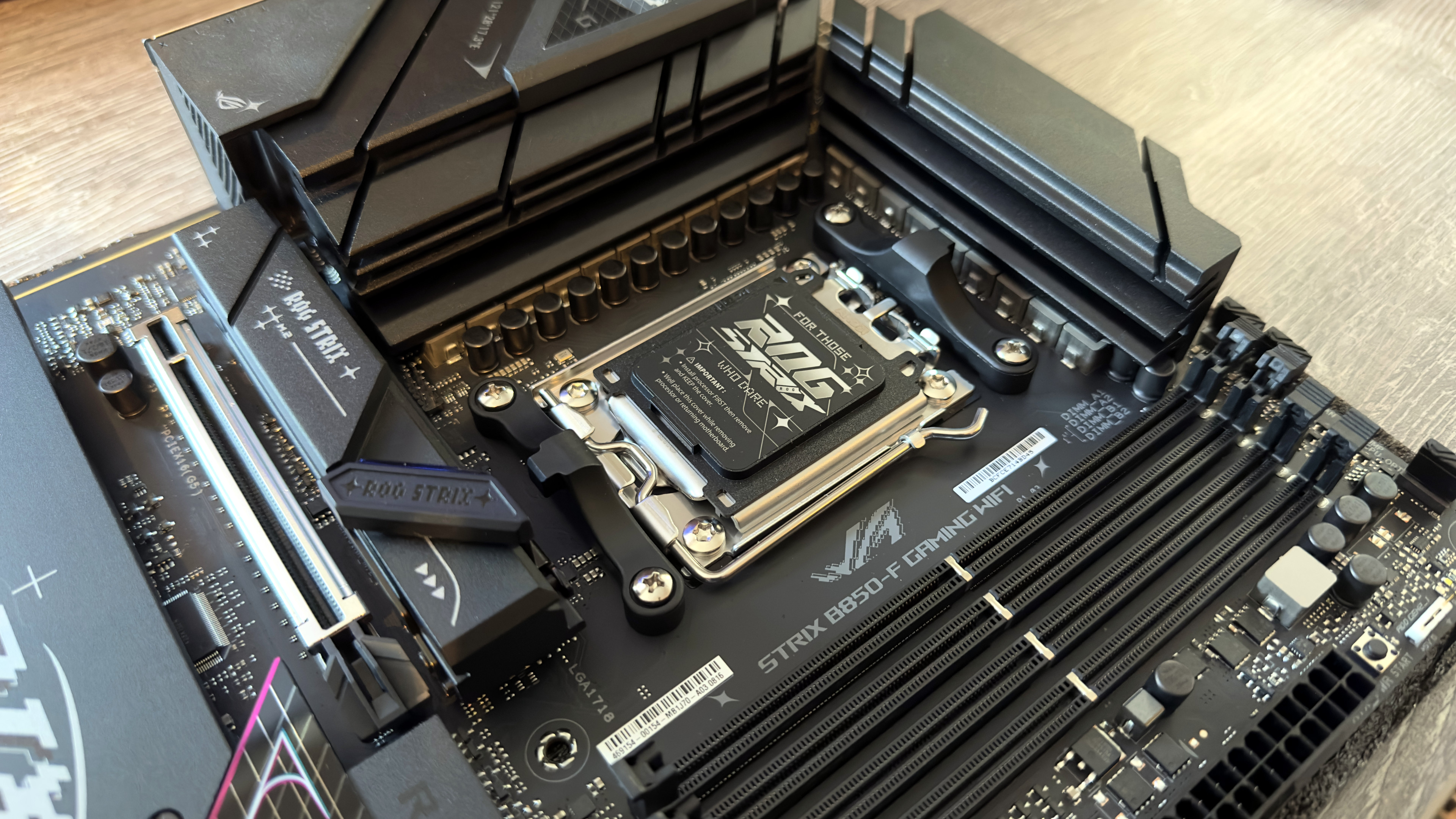
The Asus ROG Strix B850-F Gaming WiFi is a good motherboard but it's let down by some odd decisions concerning component choice, layout, and thermals. It's also let down by the price and if you are looking to spend $300 on a new AM5 motherboard, Gigabyte and MSI have better options.







